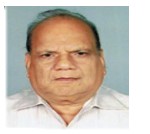
—
Ratanlal Jalan, Chairman, Jalan Wires Pvt Ltd
Mumbai-headquartered
Jalan Wires Pvt Ltd is India's
foremost supplier of aluminium and copper winding wires.
Serving both public and private sector clients since 1997,
Jalan Wires believes in total solutions through constructive
partnership. In an exclusive interaction,
Ratanlal Jalan tells
us more on his company and its stupendous growth over
the past decade. Doubling production capacity and further
exploiting the exports market are some of his medium-term
objectives, Jalan notes.
Jalan Wires caters to a large number of industry segments. Which would you regard as your
company's growth drivers?
Yes. We cater to a very wide range of segments covering motors, transformers, lighting,
automobiles, switchgear, domestic appliances, electronic industries, etc. The economy is
expected to do well and therefore there will be good overall demand. However, we see good
prospects from the automobile industry and from sectors critical to infrastructure growth, mainly
power. We are expecting strong demand from the transformer industry for copper wire. The
overall outlook for copper and aluminium winding wire is positive.
How do you cope with volatility in copper prices?
Copper prices have been volatile. We have no control over prices. Price volatility is part of our
business risk. All we can do is to minimize its adverse impact. We have what is known as a "back
to back" approach, in which we ensure that our raw material purchase is in tune with our
production. Speculation in the spot market is not a good idea.
Do you face competition from the large number of unorganized sector players in the winding
wire industry?
We face no competition as such. The markets are different. We are engaged in OEM
supplies to reputed companies, which are very quality conscious. Our clients demand the
highest quality that is simply not available with players in the unorganized sector.
However, when it comes to price, marginal players could be selling at a lower price but
there is a compromise on quality.
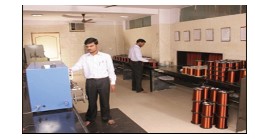 Tell us about your manufacturing facility and recent technological upgrades to the plant.
Tell us about your manufacturing facility and recent technological upgrades to the plant.
Our manufacturing plant is located at a place called Bhimpore in Daman (Union territory of Daman & Diu). Our current capacity is around 270 tonnes per month. Over the past
few years, we have added a number of imported machines that can
produce at very high speed. They are also pollution-free and very energy
efficient. These machines have made a big positive difference to quality
and even to cost-efficiency.
Can you throw some light on the criticality of a good copper (winding) wire?
Let us first understand the basic principle that whenever a copper
winding wire is used in a product or appliance, it becomes the "heart" of
the product. Take for instance a motor. The copper winding becomes
the core of the product. If the quality of the copper winding wire is poor,
obviously the motor will fail. The same goes for other products, like for
instance, domestic appliances, transformers, etc. The quality of copper
(and also the insulation) is most critical for the proper functioning of
the product or appliance.
There is always a debate on use of aluminium and copper in electrical
equipment…
As far as the comparative advantage of aluminium over copper is
concerned, there is only one—the cost factor. However, in today's
world, cost is a major factor. Aluminium is basically a tough metal and
hence more brittle than copper, which can be disadvantageous in some
applications. The advantages of copper are many. When electrical
parameters like conductivity, current rating, etc are of prime
importance, the application of aluminium is very difficult and even not
advisable; one has to use copper. Secondly, due to the excellent
conductivity properties of copper, current losses in copper are much
lower than in aluminium, making appliances and products more
energy-efficient. Copper also has a much longer life than aluminium.
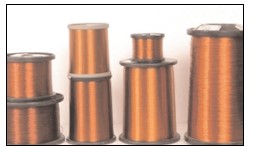 How are you gearing up for high-end copper winding wires, say for the use
of power transformers in the 1,200kV range? Would you be required to
launch special products?
How are you gearing up for high-end copper winding wires, say for the use
of power transformers in the 1,200kV range? Would you be required to
launch special products?
Firstly, I must say that we will not be doing anything "special" as such. But
yes, I must say that in copper winding wires, there are highly superior
technical products that were not being used much due to several factors
like high cost and limited availability. Now, with advancements taking place
in equipment, and the overall consciousness of energy efficiency, we
expect to see increased use of such winding wires. For instance, there is a dual-core high temperature resistant copper wire that can withstand
temperatures even up to 200ºC. Incidentally, we have a market share of
around 60 per cent in this special winding wire segment.
I would also say that now copper winding wires are being subjected
to several stringent tests, which was never the case earlier. This
makes the product (winding wire) even better. I am sure that in the next
2-3 years, there will be a sea change in the high-end variants of copper
wires used in India.
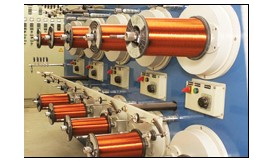 We feel that companies—be it automobiles or domestic appliances—are
getting more quality conscious of their products. Do you feel that the
growing role of multinationals in these segments is inspiring this
phenomenon?
We feel that companies—be it automobiles or domestic appliances—are
getting more quality conscious of their products. Do you feel that the
growing role of multinationals in these segments is inspiring this
phenomenon?
Yes, of course. Foreign companies operating in India have access to their
parent companies where high-quality products and standards are already
in use. Quality systems are very much in place. Obviously, they would
expect their Indian outfits to follow the same standards.
How does the Indian copper and aluminium winding wire industry compare
with global standards, and how is it faring in the international markets?
The presence of the Indian copper winding wire industry in the
international market is limited, at least at the moment. In terms of quality,
India is much superior to Asian standards. When it comes to high European
standards, I would say we are almost there. We are very close to the best
in the world!
Is the Indian copper wire industry facing competition from China?
As of now, there is no competition from China in the copper industry
because their copper rates are much higher than ours. But in future, we
may have to deal with Chinese competition!
From a B2B company that Jalan Wires is today, do you have plans to move
into the B2C segment launching products like home wiring cables, power
conductors, for instance?
Being a B2C company is a different line of business altogether. It is not in
our immediate plan.
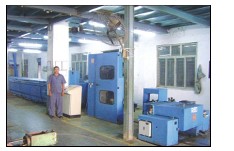 Do you see greater demand for copper wire in the renewable energy
sector, say wind power?
Do you see greater demand for copper wire in the renewable energy
sector, say wind power?
Yes, wind turbine generators, for example, need a large quantity of copper
winding wires. Besides, the quality of winding wire required is of very high
standards. There are several multinational wind turbine manufacturers in
India and we see demand from them rising.
Any major challenges that your industry faces?
I would say the biggest challenge is copper prices. There is too much
volatility and too much speculation in the copper market. That is the
biggest concern, but I am not too sure if anybody can do anything about it!
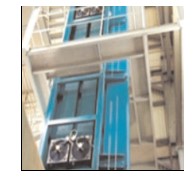 What are some of the cherished objectives that you would like to see Jalan
Wires attaining in the near future?
What are some of the cherished objectives that you would like to see Jalan
Wires attaining in the near future?
To first give you background, we started in 1997 with a small capacity of 6
tonnes per month, and progressively grew from there to reach around 270
tonnes per month today. Quality standards are much higher than what they
were in the past. As far as our targets are concerned, firstly, I would say
that we want to increase our capacity by more than 100 per cent over the
next 2-3 years. We would also like to see that a major share of this increase
is towards exports. There is a good demand for copper winding wire in
African countries and even in some European countries where cost of
production is very high. We also want to expand our product range by
introducing flat wires; currently, we are mainly into round wires. We have
already started initial work on this.